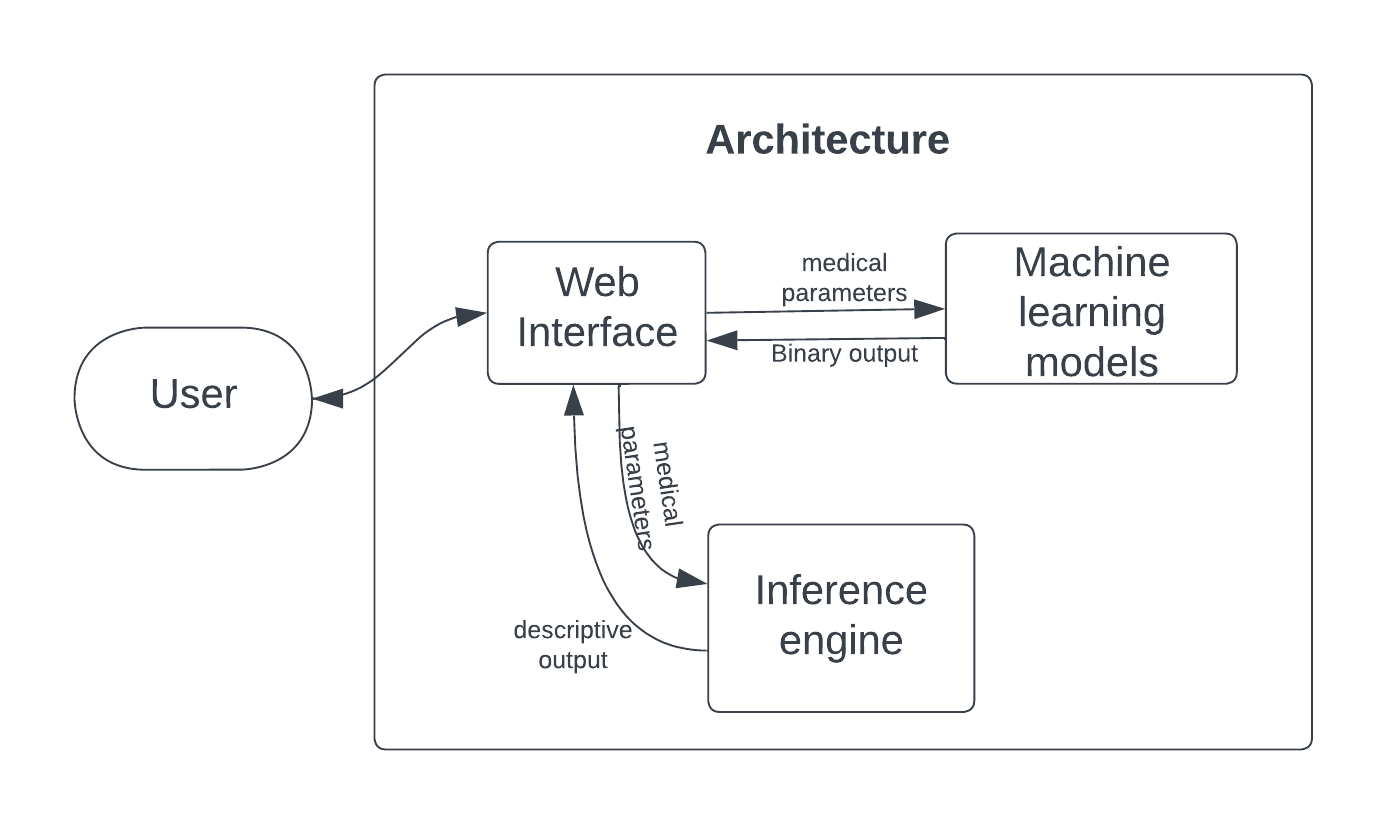FYP
Heart Disease Prediction Using Machine Learning Techniques

Introduction
Heart disease, also known as cardiovascular disease, encompasses a wide range of disorders affecting the heart and circulatory system. It has been a leading cause of mortality worldwide, making it a critical area of study and intervention. The importance of early detection cannot be overstated, as timely intervention can significantly reduce the risk of severe complications or death. In this project, I explored the potential of machine learning techniques to predict the likelihood of heart disease based on patient data.
Project Overview
This project aims to develop a comprehensive heart disease prediction system utilizing machine learning techniques. I focused on four supervised learning models: Naive Bayes, Decision Tree, Logistic Regression, and K-Nearest Neighbors (KNN). Each of these models brings unique strengths to the table, and by comparing their performance, we aim to identify the most effective approach for predicting heart disease.
In addition to building these predictive models, I developed a web-based interface that allows users, such as healthcare professionals and patients, to interact with the system. This interface provides an intuitive way to input patient data and receive predictions from the machine learning models. To further enhance the system, an inference engine has been integrated, which provides expert knowledge and medical advice based on the input data and prediction results.
Aim and Objectives
The primary aim of this project is to create a reliable and accurate heart disease prediction system that can serve both patients and healthcare centers, particularly in medical institutions. The system should not only predict the likelihood of heart disease but also offer meaningful insights and advice through an inference engine.
The specific objectives of this study are:
- To design and implement a heart disease prediction model tailored for use in hospitals and medical centers.
- To develop an inference engine that provides expert knowledge and recommendations based on the prediction output and patient data.
- To create a user-friendly web interface that allows easy interaction with the prediction system.
Methodology

The project methodology is centered around the development and evaluation of machine learning models. I began by collecting and preprocessing a dataset containing relevant patient data, such as age, gender, blood pressure, cholesterol levels, and other health indicators. The data was then split into training and testing sets to evaluate the performance of the models.
The machine learning models were trained using the training data, and various performance metrics, such as accuracy, precision, recall, and F1-score, were calculated to compare the models. The best-performing model was selected for deployment in the web application.
The web application was built using Flask, a lightweight web framework for Python. The application allows users to input patient data and receive predictions from the machine learning model. The inference engine, built using a knowledge base of medical rules, provides additional insights and advice based on the prediction results.
Scope of Study
The scope of this study is focused on developing a heart disease prediction system for researchers, hospitals, and medical clinics. Initially, the system will be implemented at the healthcare center within Anchor University, with the potential to expand to other medical institutions across Nigeria. Limitations
There are some limitations to this study that should be noted. The first release of the heart disease prediction system may not include all the desired features, such as a fully developed knowledge base or all functionalities required by medical practitioners. Additionally, the system's performance may be limited by the quality and size of the dataset used for training the models. Future work will focus on improving the system by incorporating more comprehensive datasets and enhancing the knowledge base for the inference engine.
Conclusion
The development of a heart disease prediction system using machine learning techniques has the potential to significantly impact the early detection and prevention of heart disease. By providing healthcare professionals with a tool that can predict the likelihood of heart disease and offer expert advice, this system can contribute to better patient outcomes and reduce the burden of cardiovascular diseases globally. While there are some limitations to the current implementation, future improvements will continue to enhance the system's accuracy and functionality, making it a valuable resource for medical institutions.